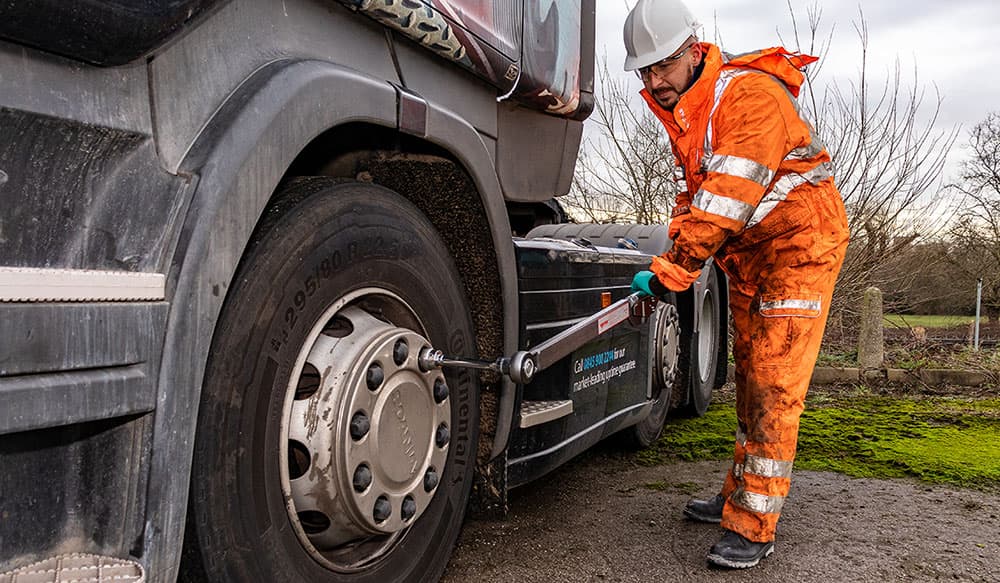Careless torque costs lives

Too often, wheels become detached from commercial vehicles during use, causing damage to property, serious injury or death.
When a wheel becomes detached from a moving bus, coach, lorry or trailer, it can accelerate to speeds of up to 90mph. Academics have likened this to a bouncing bomb, as the wheel soars to a height of up to 50m before dropping and potentially colliding with other road users at an equivalent force of around ten tonnes.
Although many people refer to the loss of wheels from commercial vehicles as a mystery, research by the Driver & Vehicle Standards Agency (DVSA) found one of the main reasons for wheel loss is a result of careless torque practices.
Why accurate torque equipment is crucial for the transport industry
Accurate torque readings play a critical part of any wheel maintenance schedule. But over time, general usage alongside wear and tear can have a detrimental impact on the internal workings of torque tools, leading to the tool delivering more or less torque than intended.
As a result, wheel nuts and fasteners on commercial vehicles may end up too loose, allowing them to back off under stress, or too tight, causing them to deform, shear, or otherwise break; ultimately leading to wheel detachment.
To avoid this, the DVSA state that any torque wrenches used during wheel maintenance must be calibrated to ensure the delivered amount of torque remains accurate.
How often should torque wrenches be calibrated?
Commercial transport businesses are often faced with a ‘Goldilocks and the Three Bears’ scenario when wondering how often they should calibrate their torque equipment. Calibrating too often leads to wasted money and causes disruption to processes. But leaving it too long between calibrations could lead to inaccurate torque readings and the consequences listed above.
It’s standard practice to calibrate a torque wrench every 5,000 clicks or every 12 months – whichever comes first. But bear in mind, there are also a number of factors that could affect the accuracy of torque tools which increases the need for more regular calibrations.
If the torque tool is dropped or banged constantly; if it’s used in unusually hot, cold, humid or wet conditions; or if it is subjected to an overload equal or more than 25% of the maximum, it’s advisable to have it calibrated more often than every 5,000 clicks.
Likewise, torque tools which show visible signs of general wear and tear, such as old grease, worn parts, or loose screws, should be pulled from service and inspected.
These tips can be used as a guideline, but specific calibration intervals will depend on the precision required, the exact tools being used and potentially the legal requirements which govern the transport industry.
Torque wrench calibration for commercial vehicles
Torque tool calibrations don’t need to be a laborious or time-consuming process. The simplest way to manage torque calibrations is to send tools to a certified laboratory for testing and re-calibration (if necessary). This avoids the need for businesses to invest in and maintain testing and calibration equipment, or dedicate internal resource to testing, calibrating and documenting the process.
We simplify the entire calibration process by offering torque tool calibrations within 5 days, including a door-to-door collection and return service. Have a look at the types of torque tool we calibrate.
